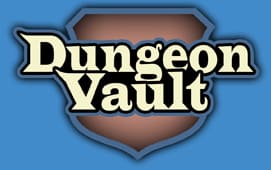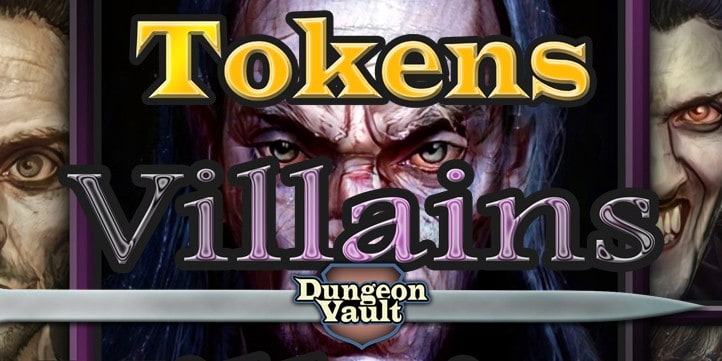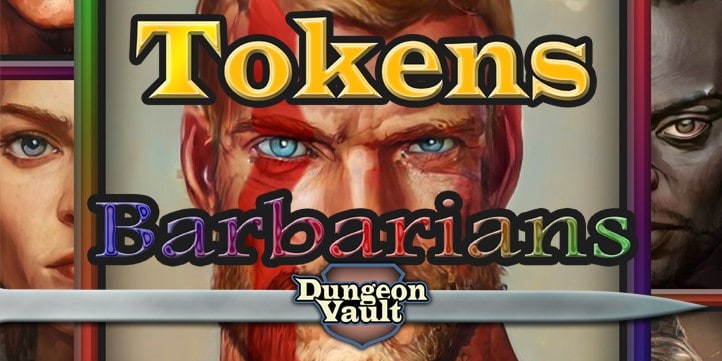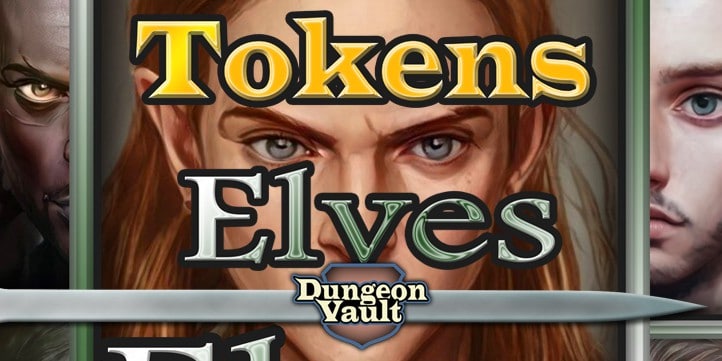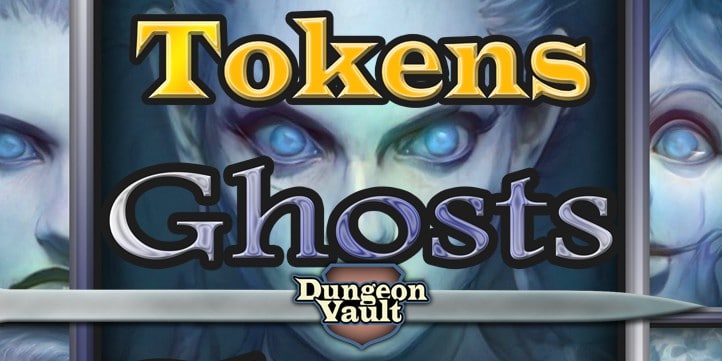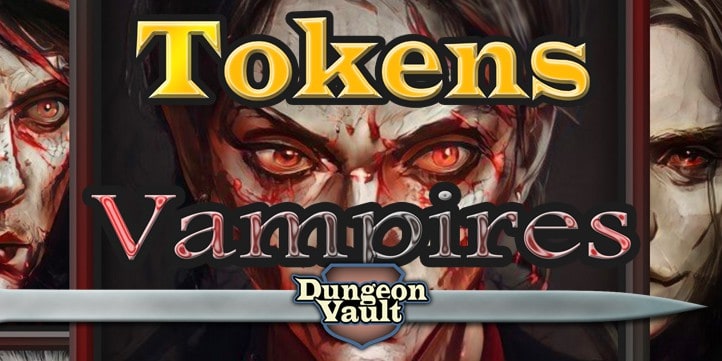
Most of us loved to pretend play when we were kids. We spent countless hours pretending to be the heroes or the bad guys. And it didn’t matter that we weren’t very good at it. But there comes a time when you start thinking about how to roleplay your D&D characters more skillfully.
As a general rule you roleplay by acting out the persona of a chosen character. You roleplay through portraying the personality, mannerisms, mimicry, and voice of a character. The depth of your roleplaying depends on whether you roleplay a flat, round, or dynamic character.
In this article, we’ll go into all the aspects of learning how to roleplay. Think of it as a short course in roleplaying. There’s a lot to learn but it will be fun. So let’s get started!
One of the biggest secrets of roleplaying is that it isn’t just about your performance. Great roleplaying starts with choosing an interesting character and understanding how they fit into the overall story.
It’s why actors obsess about finding the right roles to play. They realize the performance is only a small part of roleplaying. It’s important to not just think about how to roleplay but also about why you are roleplaying. What story are you trying to tell through your acting? And how does your character fit the story? The better the fit and more interesting your character is to begin with, the easier they will be to roleplay.
“So the big secret of roleplaying is that the performance is just the end result. The real work starts with building an interesting character who fits the story.”
We’ll get into these aspects first and then we’ll focus on acting tips and voice work later in this article. But let’s lay some good groundwork first.
1. Roleplay by Knowing Your Role as a PCs or NPCs in D&D
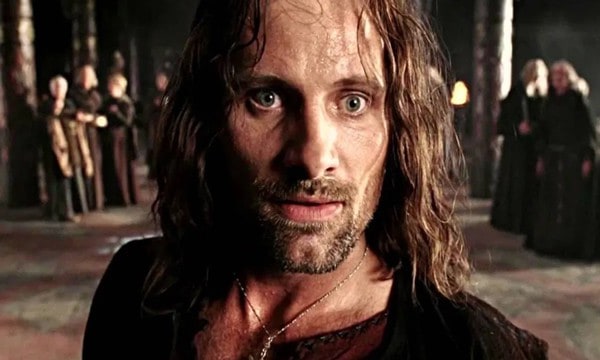
First of all, there is a BIG difference between how dungeon masters roleplay their NPCs (or non-player characters) and how players roleplay their PCs (or player characters). And it’s not something often discussed but it’s vitally important to telling a good cooperative story. Here’s why.
PCs and NPCs serve very different roles in the story. PCs are the protagonists, the stars of the show who are faced with challenges they need to overcome. NPCs are the antagonists who only exist in the story to help build the protagonist’s hero’s journey.
So if you are roleplaying a PC, you are portraying someone who will be challenged in many ways. How you face those challenges is what makes your character interesting to watch for the other players at the table. And in cooperative games like Dungeons & Dragons giving the other players at the table an experience that is engaging adds to the overall fun.
Dungeon masters have to roleplay a whole cast of NPCs. While the characters they roleplay can face challenges like PCs they’re usually only a part of the story to give PCs someone to react to. If you are the dungeon master, players will be looking to you to for creating an interesting cast of NPCs to react to. You are constantly using your cast of NPCs to create interesting challenges for your PCs that they can play-off.
2. Roleplay by Creating Synergy and Serving the Story in D&D
The synergy between all players and the DM each roleplaying their characters off each other to build a better story, is where the real magic happens in D&D. Cooperative gaming isn’t just about players working together to achieve a goal. It’s about everyone roleplaying together to build a better story. So the first roleyplaying skill to learn is to think about how your character’s choices affect the overall story. It’s called: ‘Thinking beyond your character’.
The best players think beyond what their character would do and consider how it affects the entire story. For instance, characters can bicker or even not be on speaking terms. That could provide some interesting role play. But they’ll serve the overall story better if they don’t allow the conflict to escalate into a player versus player fight.
So if your party’s rogue gets her shining moment climbing a tower undetected and a player yells ‘look a thief’ just because his character has a chaotic tendency, that’s not serving the story. It breaks the excitement of that scene, destroys the hero’s journey and agency of the rogue, and abruptly ends the challenge the DM worked so hard on. We should be free to roleplay and explore as we please, but not at the expense of everyone else at the table.
“While PCs can be at odds or have tension between them, players and the DM schould always be working together to build a better story.”
Also, serving the story and roleplaying interesting characters doesn’t mean your characters need to have ten pages of background story. You can roleplay a stereotypical dumb barbarian or grumpy wizard to great effect. But they do need to drive the story forward in ways that help other players roleplay their characters.
3. Roleplay by Choosing a Tier of Play in D&D
The beginning of good roleplaying in D&D is to build a character who develops interesting interactions with other PCs and the world around them. Good roleplayers always look for interesting interactions but the depth of these interactions greatly depends on which tier of roleplay you choose.
There are three different tiers of roleplaying. Each is progressively more difficult to play than the one before. These tiers are:
- Roleplaying flat characters
- Roleplaying round characters
- Roleplaying dynamic characters
For players who are just starting out, these tiers provide a helpful way to see how much you want to take on. It’s fine playing a flat character like a dumb barbarian. And if you are doing a hack and slash game with little character-driven plots, there really isn’t much reason to let your character progress beyond that tier. But if you want to explore deeper themes – and most roleplayers eventually do – building toward playing a round or even a dynamic character is essential. Also, you only have only one character to portray and your DM has to play tons of NPCs. So having the PCs be round or dynamic really helps with in-depth roleplay and gives other players more to play-off.
For DMs who have to roleplay a whole cast of characters, time management is important. There are probably millions of NPCs that live in your world. And it’s impossible to describe them all ahead of time. That’s why I recommend dividing your NPCs into these three tiers. Most of your NPCs you think up on the spot will be flat characters. A smaller cast of recurring NPCs will be round characters. And only the most important antagonists will be dynamic characters.
So let’s dive a little deeper into the differences between these types of characters and how to roleplay them.
4. Roleplaying Flat Characters in D&D

For DMs, these characters are the nameless masses that fill out your campaign setting. Flat characters are two-dimensional and lack depth or any real personality. They can often be summarized in one word like: ‘shopkeeper’ or ‘love interest’. For players, they are the dumb barbarian or headstrong dwarf.
Because there are probably millions of them, DMs are not going to spend any time preparing flat characters individually. Instead, you can improvise playing these characters. Here’s an easy way to do that:
First, I use an improvisational tool called ‘the alphabet method’ to generate story content. Some of you may be familiar with it from the Prepless GM a book about improvising your game. With the alphabet method, you simply pick a random letter from the alphabet.
You can quickly pick random letters by:
- Choosing the first letter that comes to mind.
- Landing your finger randomly on a page.
- Asking a player to pick a letter
- Creating a random rollable table.
When you’ve chosen a letter, pick a first name starting with that letter. For instance: ‘A = Adoren’. Then, do the same for a last name ‘W = Wanderlust’ and so on.
- Pick a first name: Adoren
- Pick a last name: Wanderlust
- Pick a physical trait: Tall
- Pick an occupation: Bard
Using the alphabet method to come up with a letter first will facilitate your creative process and help you come up with names, traits, and any form of story content you can think of really, on the fly very quickly. You don’t need books filled with rollable tables on all kinds of character traits. It takes more time to look those up than it does to use the alphabet method.
5. Roleplaying Round Characters in D&D
The next tier is round characters. For DMs, these are the recurring characters players will meet time and again. Round characters have layers, inner conflicts, and most importantly – hopes and dreams outside of the main storyline. Obviously for players PCs are always recurring which is why roleplaying a round character adds more to the story.
You use round characters to add depth to your world. While Adoren Wanderlust the tall Bard is a flat character, he might grow into a round character when players learn he has terrible stage fright, is very absentminded, and is running from something.
Round characters become more real when they are caught up in the events of the story while also having goals outside of the main storyline. Reluctant heroes (or villains) are perfect examples of how flat characters are turned into round characters. Bilbo really only wanted to tend his garden. And King Kong was just looking for love.
Here are some things you can add to a character’s description to create a round character:
- Pick a personality trait: Absentminded
- Pick a goal: Running from something
- Pick a contrast or oddity: Stagefright
Contrasts or oddities are things that do not fit the stereotypes surrounding a character. They are very important because they make your PCs and NPCs memorable in the players’ minds. It’s hard to remember another generic bard. But you’ll remember the bard with terrible stage fright. Or one who is so absentminded he keeps forgetting the words to a song.
Our brain is wired to notice and remember these inconsistencies. And they also add a realness to the character. Chances are players won’t remember Adoren Wanderlust his name. They are much more likely to refer to him as: “The absentminded bard. You know. The one who was afraid to go on stage.”
Contrasts can also be a form of inner or outer conflict. And just like most stories need conflict, so do most round characters. Adoren’s inner conflict is wanting to perform versus having stage fright. It’s a personal struggle he faces. His outer conflict is wanting attention versus running from something and keeping a low profile. Outer conflicts tie characters to the world and make a round character more than just a generic extra.
Setting up conflict or contrast in characters is an age-old writing trick. The X-men are a great example of creating characters through contrasts. Wolverine can heal his body, but not his memories (mind). Charles Xavier is his opposite who can control everything with his mind, except his own body. And together they create a contrast because Wolverine is instinctual and Xavier analytical.
Contrasts can also subvert cultural expectations. When first introduced, Gimli and Legolas seem like stereotypical members of their respective races and flat characters. This contrast helps create an interesting dynamic. But soon, and against all expectations, they become best friends. This creates an interesting contrast with their own societies. Aladdin and Jasmine, the beauty and the beast, and even Mulan and Mushu. They all work as characters because they defy cultural expectations.
When interacting with the players NPCs can highlight contrasts. DMs need to be careful however not to let every contrast turn into a conflict. At the end of the day, NPCs only exist to elevate player characters and make them the stars of the show.
As I mentioned before, contrasts don’t only work story-wise, they also help players remember NPCs easier. One of the most annoying things for players and DMs alike, is your players not remembering the names of NPCs. Weeks or months may pass since the gaming session occurred where your players had last met an NPC. So it’s easy to forget a name or what happened last time.
An easy way to help your players remember is in how you introduce your recurring NPCs. For instance: “Adoren Wanderlust ducks out the tavern door, fleeing the stage, and the absentminded bard almost runs straight into you.”
Just that one sentence restates the NPC’s name and his most recognizable trait. And that is usually all players need to remember who Adoren is and call him by his name.
6. Roleplaying Dynamic Characters in D&D
While there is usually a cast of recurring, round characters that players meet during the course of a campaign, there are only a handful of dynamic characters to a story. A dynamic character is a round character who also changes throughout the campaign. As the story evolves, so do dynamic characters. Their choices, successes, and failures shape them. If you really wish to show the impact of events in your world, show how it affects the characters living in it.
The main villain is usually a dynamic character. King Kong was lonely and found love but was enraged by the cruel humans. Saruman and Gandalf were once friends, and Gollem was just a happy hobbit who liked shiny objects. They were all changed by story events. And the fact that none of these characters planned it that way, makes them more real.
While most stories have just the players and a couple of NPCs as dynamic characters, you can create an epic campaign by showing how many NPCs change throughout the story. Lord of the Rings, Wheel of Time, and Dune are perfect literary examples of this. If players wish to learn ‘whatever happened to Adoren Wanderlust’ towards the end of your campaign, you know you’ve nailed it.
There’s no quick way to generate dynamic characters. You either let them evolve during play naturally as the story unfolds, or you plan events and how your character will react ahead of time. That takes a lot of work. But for DMs it is also why most of your NPCs will be flat characters.
7. Roleplaying NPCs for Player Character Development in D&D
Obviously, player characters will always be at the heart of the story. But in order for them to find out who they are, they need others to play-off. That’s why you need at least some dynamic NPCs in your game who provide contrasts for players. An example:
“Jeff is playing an elven witch called Alundra who is cast out of the druid circle for performing evil, dark magic. She accepts her fate because Alundra believes witchcraft is, like nature itself, neither good or evil.”
The DM reads the PC’s background story and analyses its main contrast. The contrast in this player character is that on the one hand, Alundra is a very traditional nature-loving elf. But on the other hand, she also defied cultural expectations by becoming a witch.
The DM picks up on this contrast and creates an NPC to enhance it.
“Merrian is an ancient elf who, just like Alundra, was cast out of elven society for being a witch. She teaches Alundra many things and keeps to elven tradition. But as her teachings advance, Alundra learns that Merrian also practices dark rituals. Upon further investigation, Alundra learns how Merrian committed atrocities using witchcraft centuries ago which is why it is now forbidden amongst elves. While Alundra is right about witchcraft not being evil, Merrian certainly is and has twisted it to her purposes.”
Merrian is relevant to Alundra as an NPC because she highlights her personal conflict of following the rules of elven society versus following her own path, in a very external way. The introduction and evolution of this NPC forces Alundra to make some tough choices.
In short: In a character-driven story, NPCs exist to help players make meaningful choices. You can do this by finding the contrasts in your players’ background stories and play-off those.
If your players don’t have any contrast set up, they might still evolve during the story. But without contrasts, the PCs essentially become flat characters, which is great for a hack and slash campaign. Not every story is character-driven. Just know DMs have a harder time creating meaningful NPCs if PCs don’t give you anything to play-off.
8. Roleplaying Acting Advice for D&D
Knowing how your character fits into the overall story is half the work. The other half is actually giving a performance. While there are a lot of acting techniques, you really don’t need to know them all or any of them for D&D. Acting is a state of mind. You knew how to do it then you were a kid and you still do. So why is it more difficult now?
As we grow older we grow more self conscious. And in the words of Tom Hanks, self consciousness is the death of acting. If you’re shy about roleplaying, just start small. Many players start off by playing themselves and then enlarge one aspect of their personality. That’s a nice way to start.
You’ll soon find you get more of a feel for who your character is in the world and incorporate those aspects into your characters. Also, roleplaying in D&D is mostly improvisational. You can’t plan out every speech like you would in a movie. So give yourself permission to experiment and change your character until it feels right. Just look for the feeling of what you wish to portray instead of worrying about how it looks.
For DMs it’s helpful to spend a little time with each round and dynamic character before you start your campaign to get a sense of who they are.
NPCs don’t have to feel the same way about everyone in the party. The barmaid might distrust Adoren and his bardish ways, but she shares the religion of the cleric and always makes sure he gets the best food in the house. Creating these differences in how NPCs engage with players is another way to establish contrasts.
Another principle in acting and storytelling is to ‘show, don’t tell’. So instead of saying the barmaid favors the cleric, show the players by explaining how she serves him first and gives him the largest plate of food.
This principle also applies to acting out what your characters are doing. You can liven up a performance by acting out your character doing something while they are talking to the players.
The barmaid might be cleaning the tables, the warrior is sharpening his sword, a wizard doesn’t look up from his book. Adding in these small gestures helps you get into character and suggests an imaginary world to the players. You can also use your body language to suggest a physical appearance. If your character has long hair and you don’t act like you’re tying your hair back. And your gnome might look up and duck right and left to get out of big folks way.
9. Roleplaying Aids for Players and DMs
You can convey a lot by the way you act out a character’s mannerisms. But actors dress up for their roles and D&D players generally don’t. That’s where character portraits can be really helpful.
Having a picture of the character you are portraying in front of you on the table while you are roleplaying, helps other players imagine what your character looks like. It’s even better if you have a matching token on the map if you use one.
For DMs this is even more important. Without a collection of portraits to choose from every NPC will look like you. So having a deck of NPC portraits to use will make your world feel more alive and expansive. And it helps players remember who they are talking to.
I’ve created a collection of 440 portrait tokens called the TOKENS Bundle. Each token comes with a 3 by 3 inch printable card, a 1 by 1 inch token to place on the map, and an animated version of the token for virtual tabletop play.
10. Roleplaying Voice work Advice for D&D
Fifty percent of any roleplaying performance is voice work. It is absolutely not necessary to do voices. A campaign can work just fine without them. But they do add another layer of uniqueness to your characters and make them more memorable. Also, voices can help you to quickly get into character. So here are some quick tips.
First, doing a voice is not the same as doing an accent. In fact, doing accents well is really difficult. And even if you get it right, someone with that accent will probably be able to tell it’s fake (and might be offended by it.) Instead, it’s much easier to just talk in your natural voice and only change a couple of aspects of it. This will seem almost too obvious but bear with me.
Here’s a list of some aspects you can change:
- High
- Low
- Melodious
- Monotone
- Fast
- Slow
- Loud
- Soft
- Sustained (no pauses between words)
- Staccato (small pause between each word)
- Irregular (mix of sustained and staccato)
- Breathy
- Articulate
- Nasal
- Gliding
- Croaking
Now here comes the cool part. You can create over a hundred distinctly different and memorable voices by combining just three of these aspects for your characters. By using this method DMs can give each NPC a unique voice that is instantly recognizable to the players.
So your main villain might have a ‘slow, articulate, breathy’ voice. And his evil henchman could speak in a ‘croaking, melodious, fast’ way. The best thing about this is that you can write down the voice in your notes, so you can consistently use the same voice every time you play the NPC. And consistency is key to creating believable NPCs. If you’re interested in doing voices, I strongly recommend you play around with this system. It’s way more powerful than it looks on paper.
Examples of Character Building for Roleplaying in D&D
I hope this article has shown how the performance part of roleplaying really isn’t that difficult. We often make it out to be more than it needs to be. Meanwhile, building interesting characters that fit the story and creating contrast and synergy with other characters is where you can really elevate your game. Any performance you give looks better if it fits the story and even the greatest performances fail if they don’t.
So in the second part of this article I will give you a ton of suggestions on how you can build better PCs and NPCs. Of course these are certainly not the only way to go about it. But I hope these suggestions will provide you with inspiration for creating your own characters.
Roleplaying Heroes in D&D
Flat hero characters protect the weak and defenseless and defeat evil wherever it rears its ugly head. And they do so for entirely selfless reasons or simply because it is the right thing to do.
Low resolution sample. Get the Heroes pack for high resolution.
Round hero characters usually don’t have such simple concepts of good and evil. Certainly, there are those who risk their lives for the greater good. But a more grim take is that many heroes are simply the survivors of an unjust war, decided by Kings and politicians who have never seen a real battlefield.
They survived and the adoration of a nation is all they have to show for it. Not because of what they did. But because people need to believe someone will keep them safe and they fit the narrative.
They know the ruthless truths of being a hero. The hero is not the one who runs into danger first like something out of a bard’s tale. That is called the sacrifice. The hero is the one who manages to sneak behind the monster while it is distracted by the sacrifice and stab the bastard in the back. The hero is the one who, when the dust settles, is still standing with one foot over the corpse of his enemy. And that means a hero always fights for the winning side. Because history is written by the victors. And there are no songs of heroes on the losing side.
So while the people praise their heroes they know that it has little to do with values or protecting the innocent. In war nobody is innocent. And on the battlefield, the cries of your enemies sound no different from the cries of your allies.
Both flat heroic characters and round characters can be interesting to play. Sometimes you just want to play the good side fighting the forces of darkness. But a round hero character can more deeply explore themes of war, dominance, choice, and the nature of good and evil.
Roleplaying Villains in D&D
Flat villainous characters don’t need a reason to be evil. They just are. If your villain is a demon from the underworld then being evil is just in their nature.
An example: “Dor thak the Brutal delights in playing with his prey. He preys on the weak and drives them to the brink of madness. To grand death after they beg for it is Dor thak’s greatest sadistic pleasure.”
With flat characters, there’s no reason for them to become evil. They simply are the embodiment of what we consider evil in the world and as a result, PCs feel no guilt over slaying these villains.
Low resolution sample. Get the villains pack for high resolution.
Round villainous characters weren’t born evil but became that way through circumstances and choices. These villains often see themselves as heroes in their own story. They have goals and dreams like anyone else. Those goals just happen to be in conflict with the PCs or even the rest of the world.
An example: “Juna was studying abroad to become a High Wizard when her whole continent disappeared beneath the waves. That day she swore to not only bring her family back from the dead but every soul who died. The ancient necromantic tomes she stole tell her that bringing her people back from the dead will require sacrificing every other living soul on earth. But great deeds were never accomplished without sacrifice.”
Juna’s acts are certainly evil but she also acts out of love for her people. And in her mind, she is saving her people from an evil fate that should never have happened in the first place. Villains pursue their goals relentlessly. Still, some might have a code of things they won’t do while others will try to win at any cost. Round villains are not evil by nature and when their goals happen to coincide with our PCs (assuming they’re playing the good guys) villains might even do acts of kindness.
Round villainous characters are more real but their realness also means PCs face a moral dilemma in killing them. Can Juna still be reasoned with? Can the PCs keep her from doing harm without harming her?
Both flat and round villainous characters can be a fun gaming experience. Just know that if you choose round villainous characters, they do come with moral dilemmas.
Roleplaying Barbarians in D&D
Flat barbarian characters are primitive, strong, use their strength as the solution to every problem, and are unevolved in many ways. You can play a barbarian to these stereotypes to great effect.
Low resolution sample. Get the Barbarians pack for high resolution.
Round barbarian characters have good reasons for being who they are in the world. One interpretation of barbarians might be that they choose to live in harmony with the land in the harshest of natural conditions. They honor the traditions of their ancestors and those traditions make sense in the natural environment they live in. Their society is governed by many rules to ensure the survival of the tribe. Even tribes warring with each other ensures that the strongest survive to meet the challenges of nature.
In the tribe the needs of the group outweigh individual needs. Any aggression or tests of strength are to strengthen the tribe no different from the natural selection that takes place in nature. In this barbarians also consider the generations that come after them which must also be strong to survive.
Barbarians also consider the next generation by sustainably taking from the land. By contrast, those city folk change their surroundings for their selfish needs, compete with each other for selfish reasons, and exploit natural resources until there is nothing left for the next generation. In this city folk call themselves evolved but they lack the strength to make the hard choices.
Roleplaying Elementals in D&D
Flat elemental characters feel that their element is superior to all others. And as an extension, they are superior to all beings who possess less of the element they were born with. Their personality also mimics traits we commonly associate with elements. A hot temper for fire, an unmoving stubborn streak for earth. These stereotypes might be how outsiders view elementals before they really get to know them.
Low resolution sample. Get the Elementals pack for high resolution.
Round elemental characters don’t necessarily believe their element is better than others. But they are so much more keenly aware of their element that their focus and thinking is in that direction.
For instance: Wind elemental Rajesh Stormfall feels in every moment how he is a part of the wind and how it stirs and is so much greater than himself, that he doesn’t experience the word in such an individualistic way.
Still, round characters have hopes and dreams outside of their primordial nature. It is in the ways how round characters do not fit the stereotypes that we come to recognize them. So while Rajesh Stormfall can simply be the wind and float wherever life takes him, he has also fallen in love with Maja, a dwarf who refuses to travel. And now Rajesh is torn between freely wandering the skies as is his nature and being with his loved one trapped in the hearth of a solid mountain. How long will he manage to stay before the wind calls upon him again?
Elementals are ideal for setting up an internal conflict because you can use the stereotypes that come with each elemental to contrast with desires that don’t fit the stereotype.
Roleplaying Fairies in D&D
Flat fairy characters are mischievous with no other desire than to cause trouble to unwary travelers and do their jobs tending nature.
Low resolution sample. Get the Fairies pack for high resolution.
Round fairy characters are a part of nature. Tending to their specific tasks in nature isn’t only their job. It is who they are. And therefore a fairy will always be true to its nature. Whether it’s making the leaves fall in autumn or helping flowers bloom in spring.
Being true to your nature and truth, in general, is fascinating to fairy. They cannot literally tell a lie, but they are masters at bending the truth and playing pranks is a much-needed form of practice for fairies. Being unable to tell a lie also means fairies are bound to their word. They can break no bonds. But agreements made with fairies are often not the ones others think they’ve made. Within this bending of the truth lies their limited free will. A half-truth can be interpreted in different ways and offers a choice.
Without those choices, fairies would simply tend to nature. Round fairy characters are their nature but also long for freedom. And they’ll take the opportunities to sow chaos and create multiple outcomes to choose from. This is an everlasting struggle for freedom. But fairies do not resent their fate. The eternal struggle to be free and inevitable return to being one’s nature is a natural part of being a fairy.
Roleplaying Elves in D&D
Flat elven characters are aloof and haughty. They are graceful and possess a timeless beauty. And are masters of their crafts.
Low resolution sample. Get the Elves pack for high resolution.
Round elven characters endure in a world ever-changing. They are the moonlight over the pond. The silent leaf floating down a babbling brook. To these things, like the elves, there is an everlasting stillness. It is no doubt their fey ancestry that connects elves to the perpetual aspects of nature. And the lives of short-lived races with their desires, crises, and revolutions, are like waves breaking on the beach to them. In. Out. In. Out.
Elves see that every crisis is eventually resolved to be replaced by a new crisis. And those who tie their fate to a cause often perish because of it. They also accept that desire is the source of pain. And when you live as long as elves do, it makes no sense to go seeking pain.
Elves are not moved by events or the lives of the short-lived easily. For they can only retain their unchanging nature if they let the ever-changing aspects of this world pass them by. But when elves do give their heart to a cause or non-elf, it is with their whole heart. And they make the choice knowing full well that it will change who they are forever or might even be the end of them.
Elven history is full of warning tales of elves who gave themselves to a cause and spent their remaining centuries paying the price. For in the unchanging elven heart grief does not fade with time. Outsiders call elves uncaring, but they cannot begin to comprehend the price elves pay for losing themselves to causes.
Roleplaying Gnomes in D&D
Flat gnome characters are impulsive and inquisitive by nature. They love life and all things creative. A Gnomish settlement looks more like a collection of – often failed – experiments. On the surface, it looks like every gnome is talkative and wants to explore everything that comes across their path.
Low resolution sample. Get the Gnomes pack for high resolution.
Round gnome characters aren’t simply impulsive and inquisitive by nature. They have good reasons for being the way they are. One of those reasons is that gnomes are descendants from fey. And fey such as fairies have very specific tasks to perform in nature, like letting the leaves fall in autumn.
Gnomes have freed themselves from the tasks fey typically do, but they still have to stay busy. That spark of fey heritage will not allow them to rest. Gnomes live for about four centuries and in that time they must never lose interest in life. For an uninterested gnome will soon start to fade. So while gnomes love life and wish to experience every moment to the fullest there is something manic about their urge to explore.
When a gnome creates it is not about the result. The joy is in the journey of discovery which keeps gnomes from fading. But for all their impulsiveness, many gnomes do fear that what they create might be harmful to the world. A gnome who invents a more powerful weapon might trigger a war. And what if the automaton they just created starts to reproduce and destroy life as we know it? Interesting, how would that work? No! Bad gnome!
Roleplaying Halflings in D&D
Flat halfling characters have a childlike appearance, kindness, and curiosity. They enjoy the good life and simple pleasures and rejoice in sharing with others.
Low resolution sample. Get the Halflings pack for high resolution.
Round halfling characters possess all of these traits. But contrary to children they are not naive about the big folk and their roughness. Halflings know perfectly well how big folk joke about their stature and can be cruel or untrustworthy. But they choose kindness and loyalty anyway. Because halflings know that good things only grow through care. And a heart needs tending like a garden so the weeds of anger must be uprooted before they can fester.
If there is anything that sets halflings apart from other races it is their heart. They do not walk into danger because they are too naive to see it but because it needs to be done and the big folk rarely have the brave and selfless hearts required to see the task done.
Of course, there is a myth about halflings being lucky. But is it luck that a cat always lands on its feet or is it skill? Even with the most obvious of talents, big folk choose to act as if halflings have nothing to do with the outcome.
Halflings have not survived by being naive or unaware of their surroundings. They hide when they have to, are brave when required, and they know there is strength in numbers. Tending a kind and brave heart is of vital importance to any halfling. For they are too little to survive on their own.
A halfling’s heart is not easily corrupted. But when it does happen the results are terrifying. Their ability to move unseen and use their awareness of danger to find weak spots grants them deadly accuracy. And when those big folk find a dagger in their backs nobody’s laughing.
Roleplaying Half-Orcs in D&D
Flat half-orc characters are much like humans with a rough aggressive streak. They are quick to anger. Do not think before they act, and are touchy about their heritage.
Low resolution sample. Get the Half-orcs pack for high resolution.
Round half-orc characters stand apart from the society they grow up in. They may have gained some foothold but are mostly reluctantly tolerated instead of accepted and embraced. Some become loners and reject others completely, while others become overachievers in the hopes of still gaining some honor and approval.
And then there are those who find a new family. It may be the party, pet animals, or simply giving to the society as a whole. While rejection is often the start of a half-orc’s story, it doesn’t have to be the whole story. In fact, the journey from rejected victim to growing beyond that grief can be the arc of a half-orc’s story throughout a campaign.
But while this theme of rejection is common in half-orcs, it doesn’t have to be every half-orc’s story. Some half-orcs grow up in loving families or just aren’t as affected by their hardships. And any character is certainly more than their heritage. So who is your character beyond being a half-orc?
Another interesting way of playing half-orcs as round characters is to take a stereotype and play it out in a very realistic way. For example:
‘Tox held the tip of his broadsword low, ready to make an upward swing as the sorcerer approached. He did not speak often, but he decided to do so now. ‘I am afraid..’. The sorcerer’s eyebrows rose. ‘You? A fierce half-orc? Afraid of little old me?’. Tox shook his head. ‘Not of you. I am afraid of what I will do to you. I fear what it will do to your family when they hear you have been ripped apart limb from limb. And I fear for your children who will grow up to hate me and maybe seek revenge. And then I will have to kill them too. I fear that if I start killing again it will come too easily to me and I will lose myself to the bloodlust once more. But mostly, I fear myself.’
Tox, like many half-orcs, has an anger management problem and he plays it out in a realistic way fearing when he will lose control again. For building a round character you can take aspects like aggressiveness or rejection and play them out as they would affect a real person.
Roleplaying Ghosts in D&D
Flat ghost characters are evil spirits who simply hate life and attack the living. They serve as encounters to be defeated by the players.
Low resolution sample. Get the Ghosts pack for high resolution.
Round ghost characters are stuck between this world and the next. They either vowed to stay by sheer force of will, or they were cursed from moving to the next life until a condition is met.
Whatever the reason, unlife between worlds is not easy. There is no joy in being ethereal. And ghosts who wander here for too long forget the taste of food or what the warmth of sunshine feels like. They are bound to life but cannot experience its joys. And that is why many ghosts slowly grow mad with suffering.
A ghost can, for a short period, possess a living being and affect the material world. But even in this state, it is impossible to experience the joys of the living. So it only serves to maybe one day meet the requirements for moving on.
Unlife becomes even more difficult if a ghost falls under the control of a necromancer who will most assuredly keep a ghost from moving on. And all the while its sanity is slowly slipping away until there is nothing left but bitterness and hate.
Playing a round ghost character can be a desperate race against time in which hate and forgiveness, blame and guilt, damnation and salvation, are usually central themes.
Roleplaying Vampires in D&D
Flat vampire characters are powerful, decadent, and sophisticated. But behind the facade lies a carnal and feral nature.
Low resolution sample. Get the Vampires pack for high resolution.
Round vampire characters are not nearly as free as they claim to be. They must serve the one who sired them. And the freedom of being immortal comes at an ever-growing price. It is not just the joy of daylight vampires give up. They must keep up with the times for if they lose touch, their feral natures may control them. And wild vampires are nothing more than beasts in the night.
While their decadence looks like a celebration of their freedom to chase every desire, it is a desperate attempt to cling to civilization. After centuries of unlife the desires that once seemed so extraordinary now ring empty. The taste of wine fails to impress, and even the finest silks or latest fashion become common and familiar. Eventually, a vampire feels nothing and the unlife becomes like stale bread, unable to inspire.
When all the carnal joys mean nothing there is only eternity to face. So they turn to the young and innocent. By charming and controlling them they can still evoke powerful emotions in others, even if they can no longer experience them themselves. This becomes a vampire’s only connection to any sort of meaning. For the deepest truth is that in their dead unbeating hearts vampires know they have nothing real or substantial to offer.
Common themes in vampire literature are hedonism versus existential meaninglessness, civility versus wild abandon, and control versus freedom.
Roleplaying Zombies in D&D
Flat zombie characters are simply enemies players meet. You can add a bit more depth by having some zombies be former loved ones but essentially they are monsters to be defeated.
Low resolution sample. Get the Zombies pack for high resolution.
Round zombie characters can offer very interesting roleplaying opportunities. Zombies have little desire or motivation other than to attack everything that lives. But the old desires a zombie had during its lifetime may still linger. Zombie characters could at times still act on those dormant desires.
Some zombies might still have memories of being attacked by loved ones before they were turned or they might have memories of attacking loved ones. But like their desires, those memories are already starting to decay. This brings us to another aspect of being a zombie.
Zombies have no natural healing. So their story is one of continual loss. They lose their humanity, desires, memories, and when hurt – even their limbs. When playing a zombie there might still be that glimmer of hope and recognition but it is fading.
The story of a zombie is a tragic one but at least they will eventually fade into oblivion over the course of centuries of suffering. That story becomes even more tragic when they are controlled by necromancers who patch up zombies time and time again. And whatever glimmer of hope was left for salvation is gone.
Zombie player characters may have found some way to gain back a bit of control but their situation is usually desperate at best.
That concludes my list of examples. I hope this article provided you with a some ideas of how you can build and roleplay your characters. And as always:
Have Fun!
By Paul Camp
